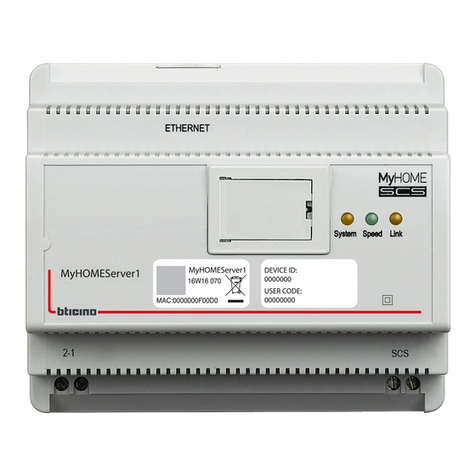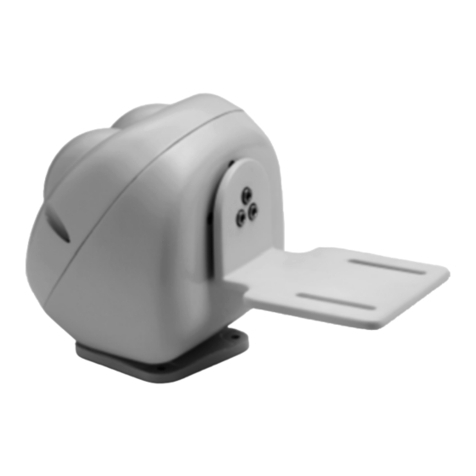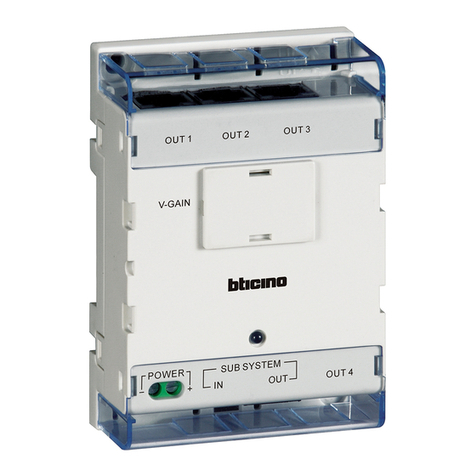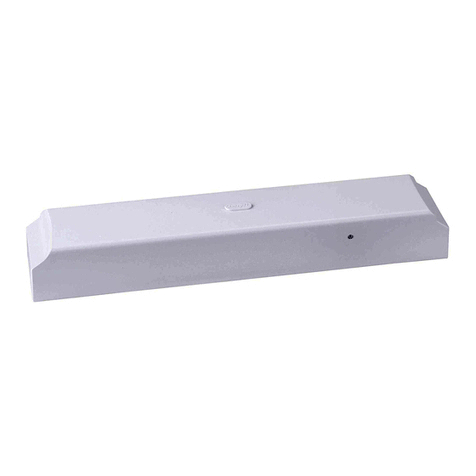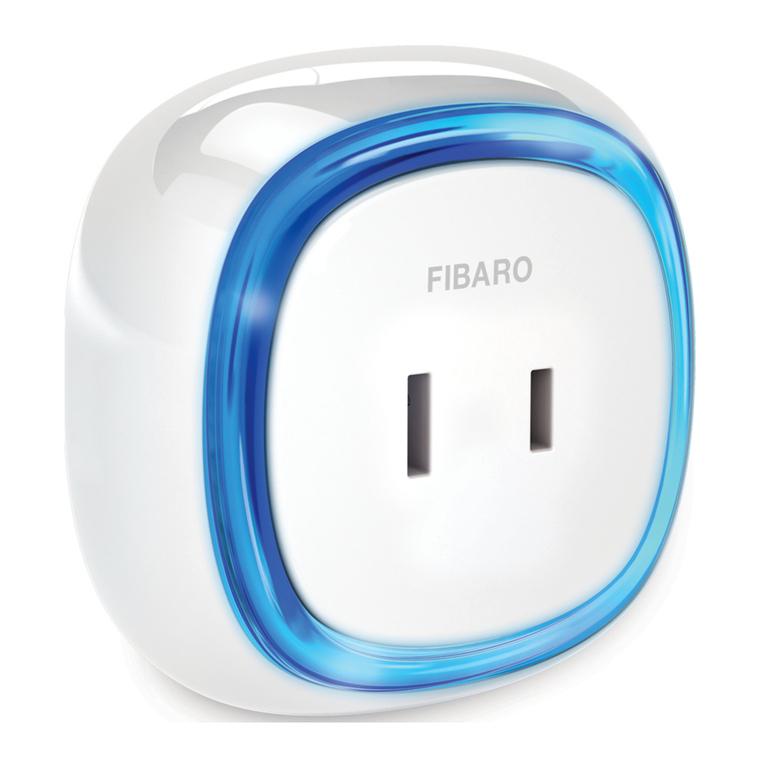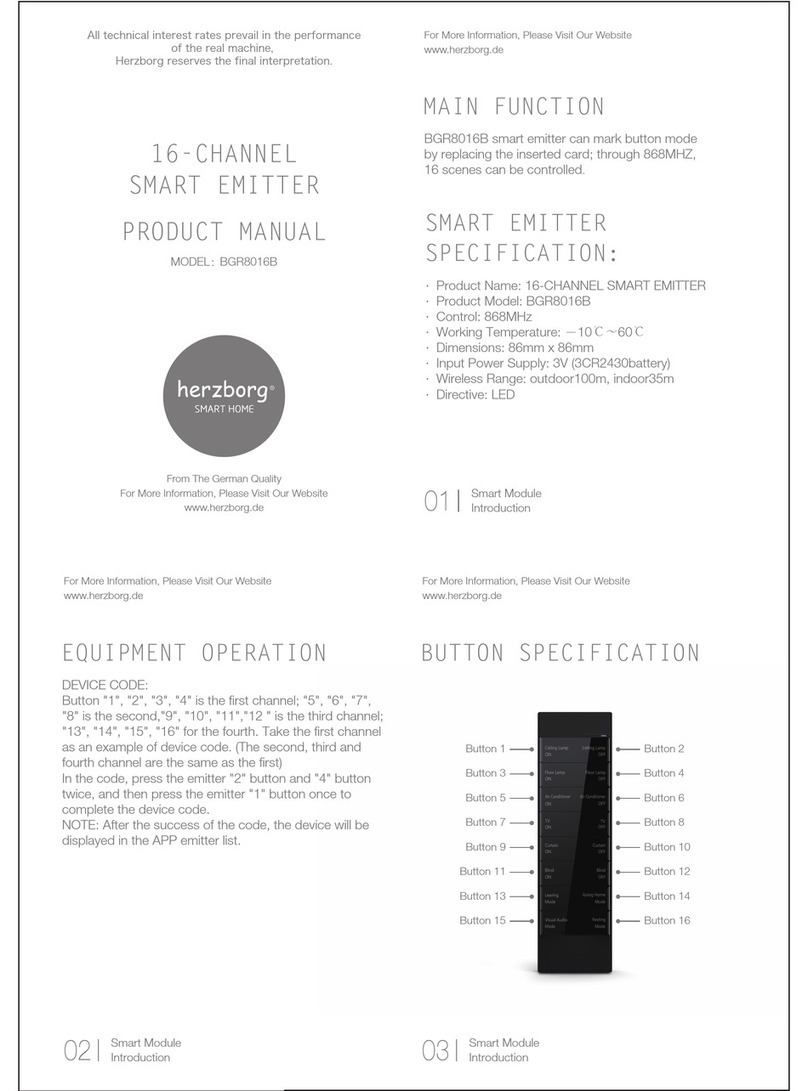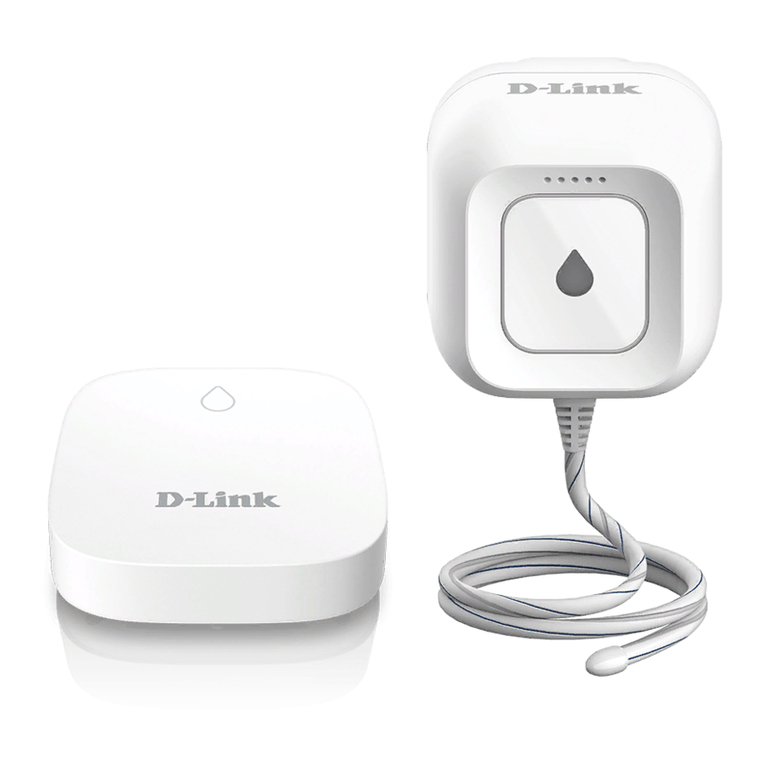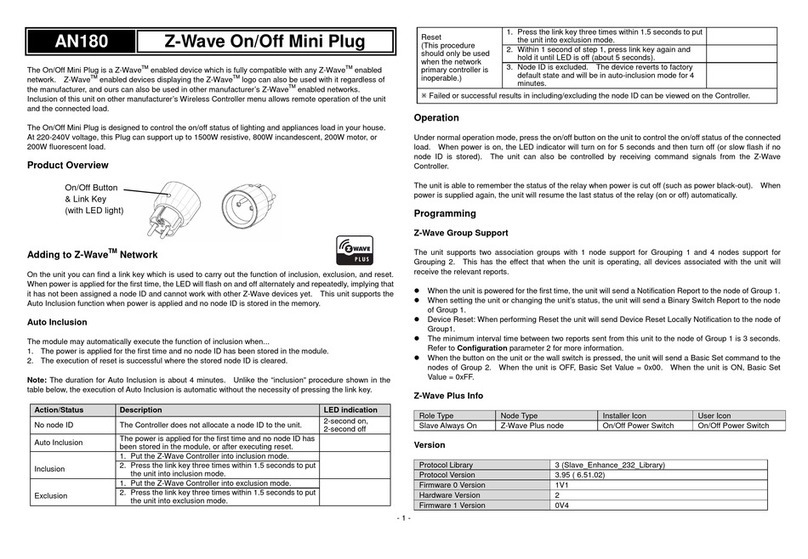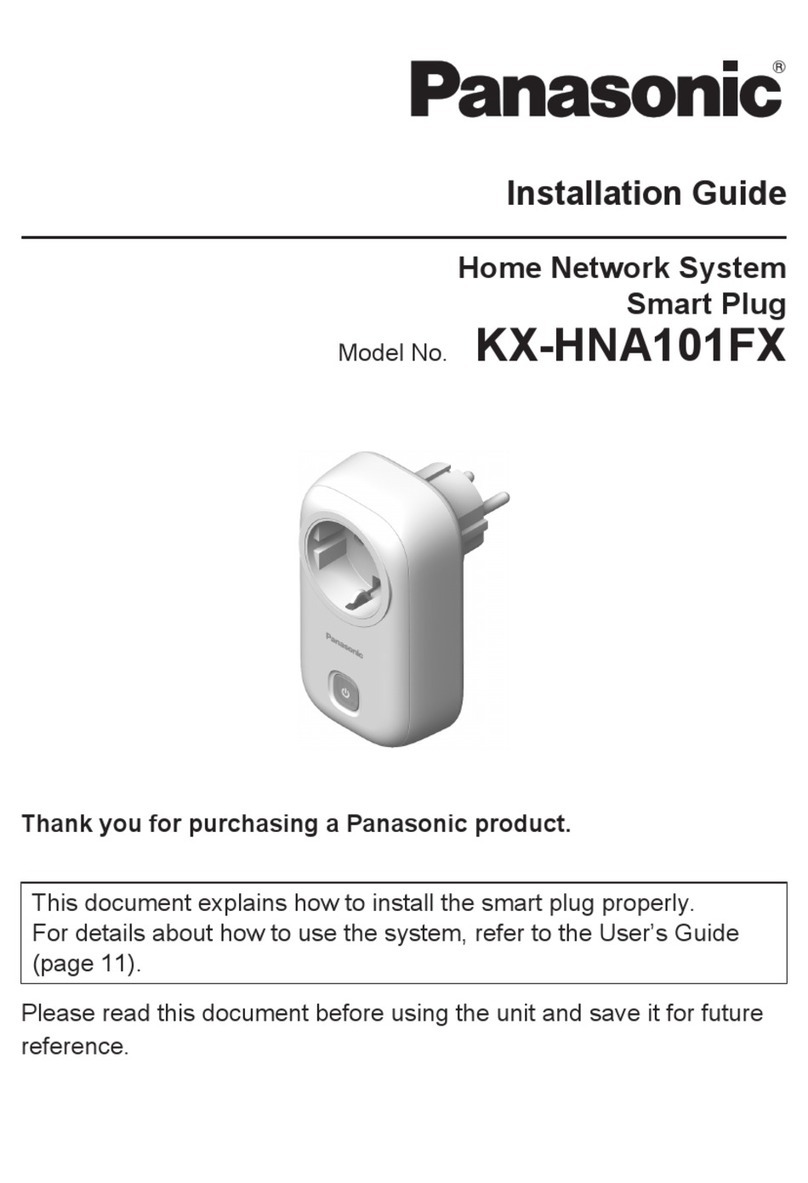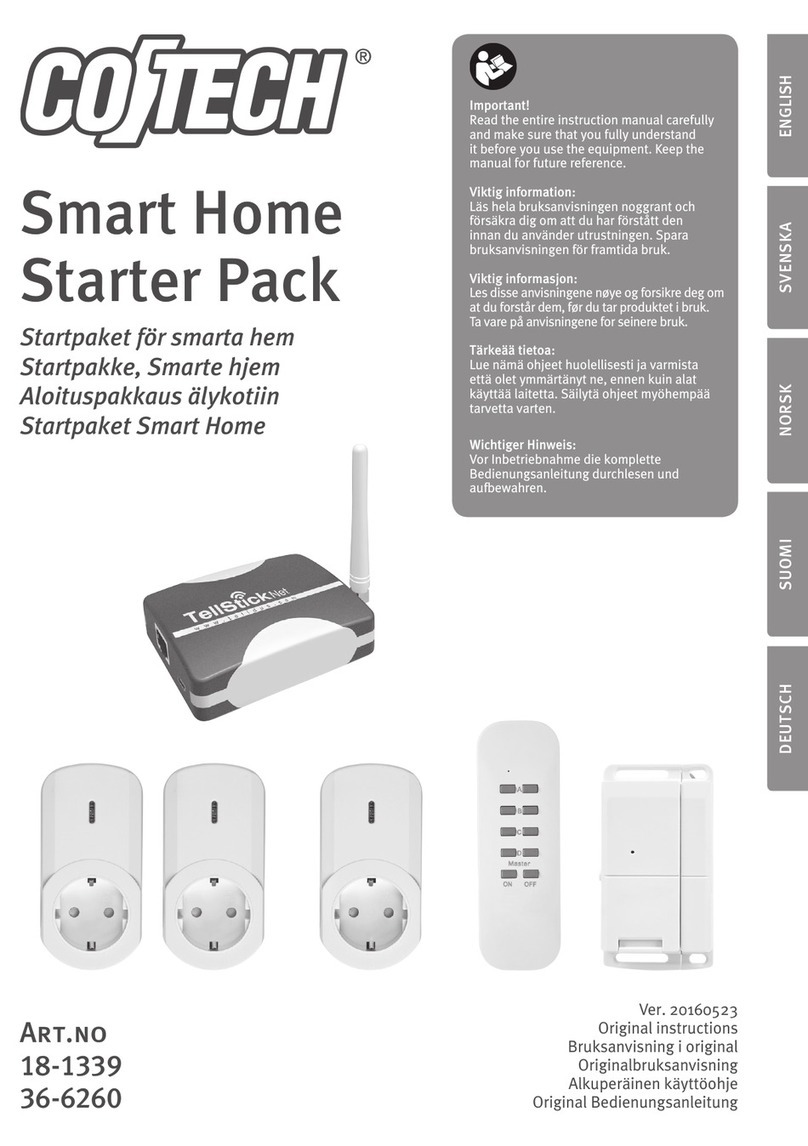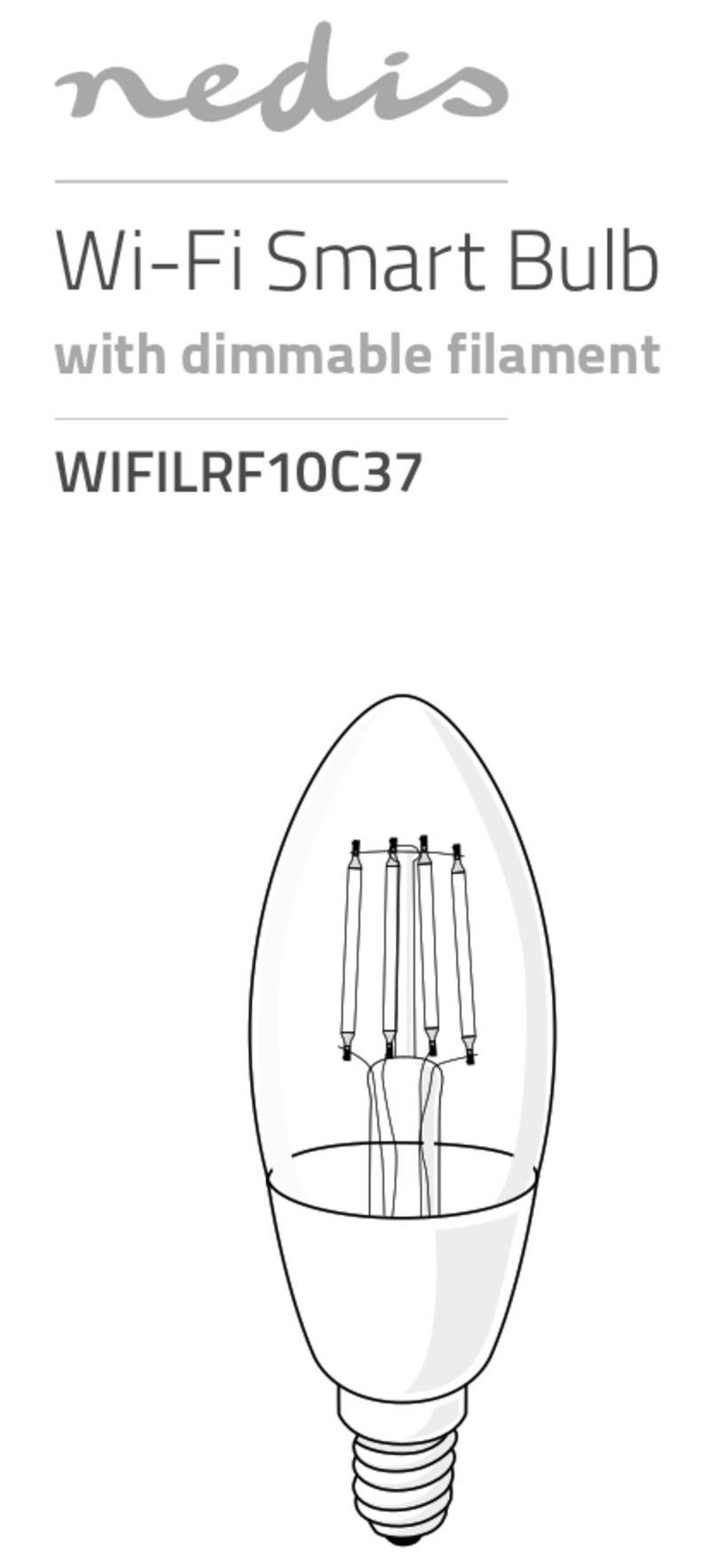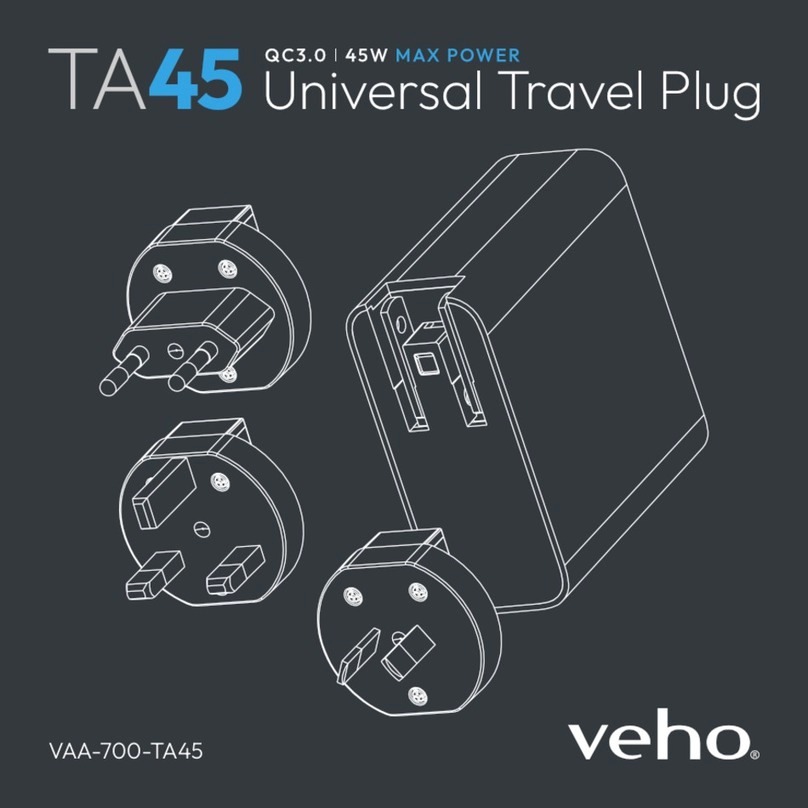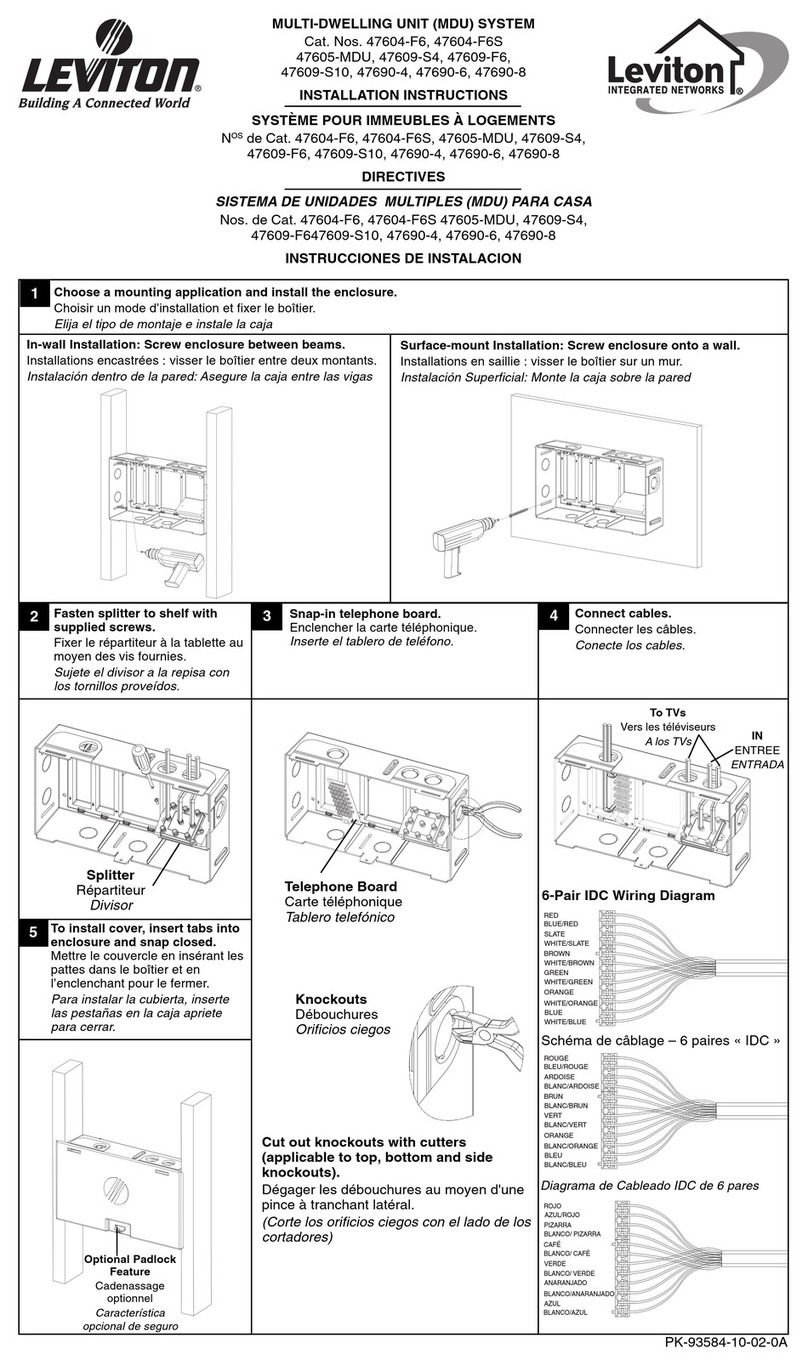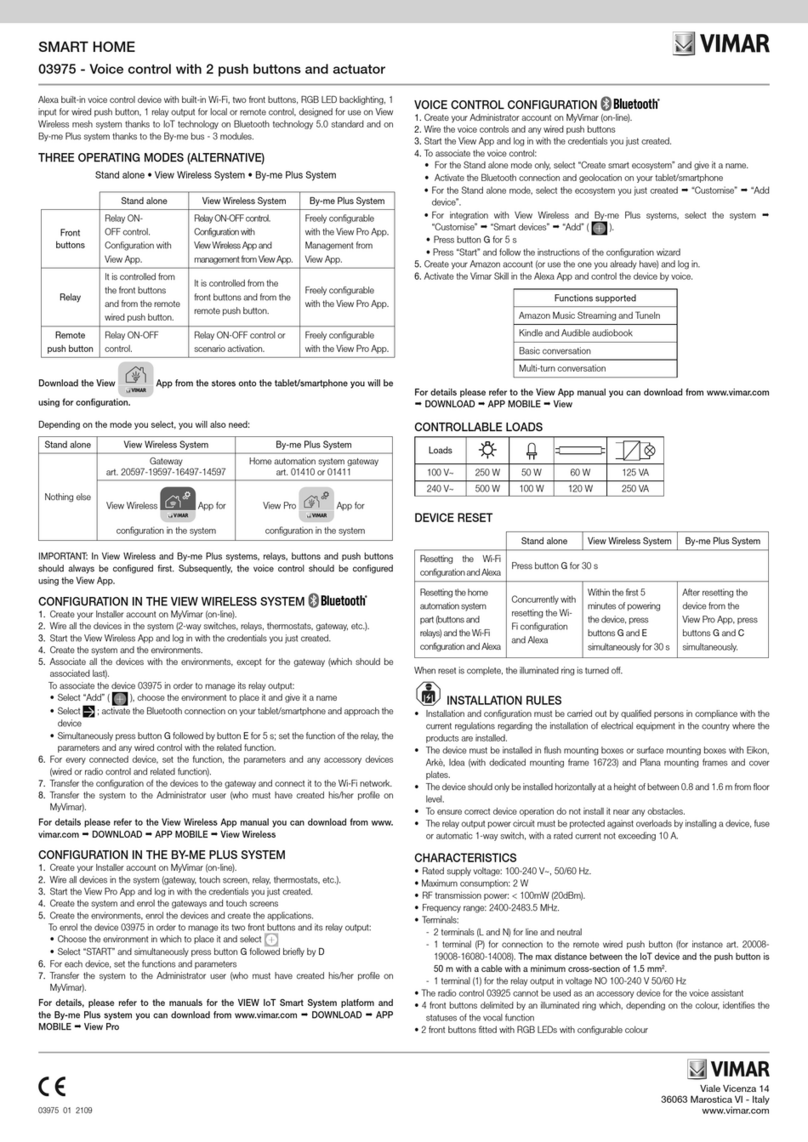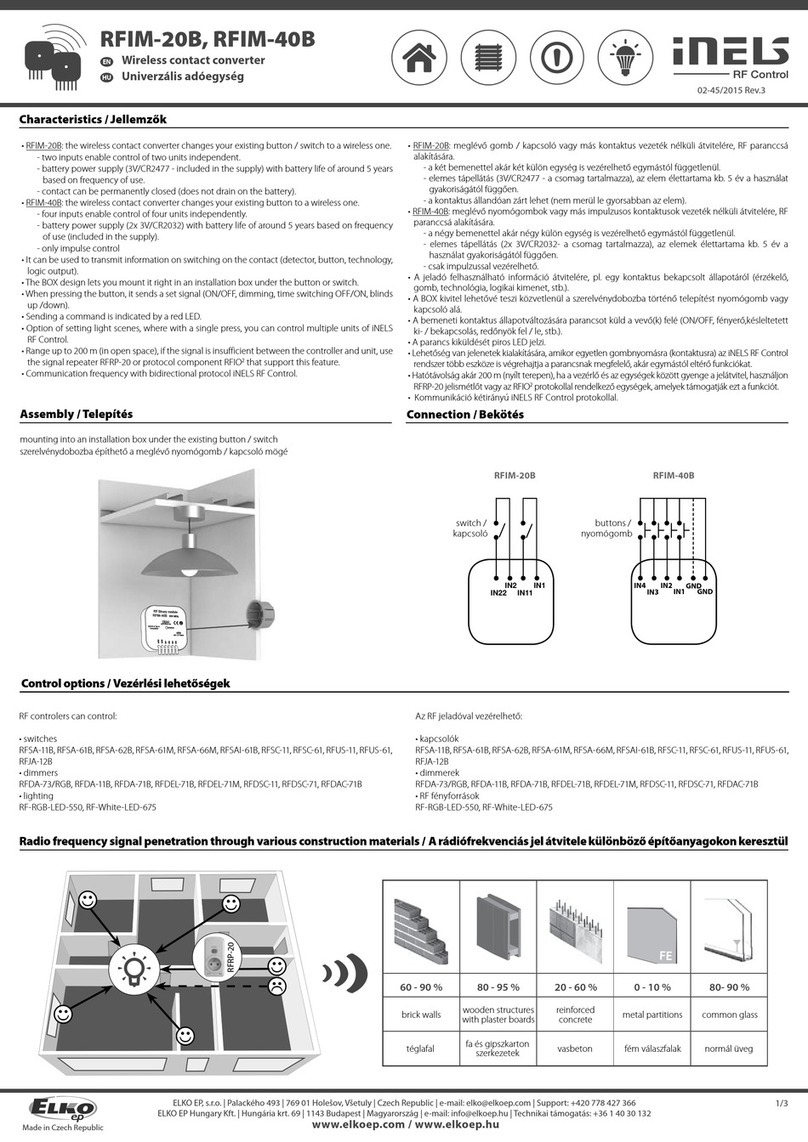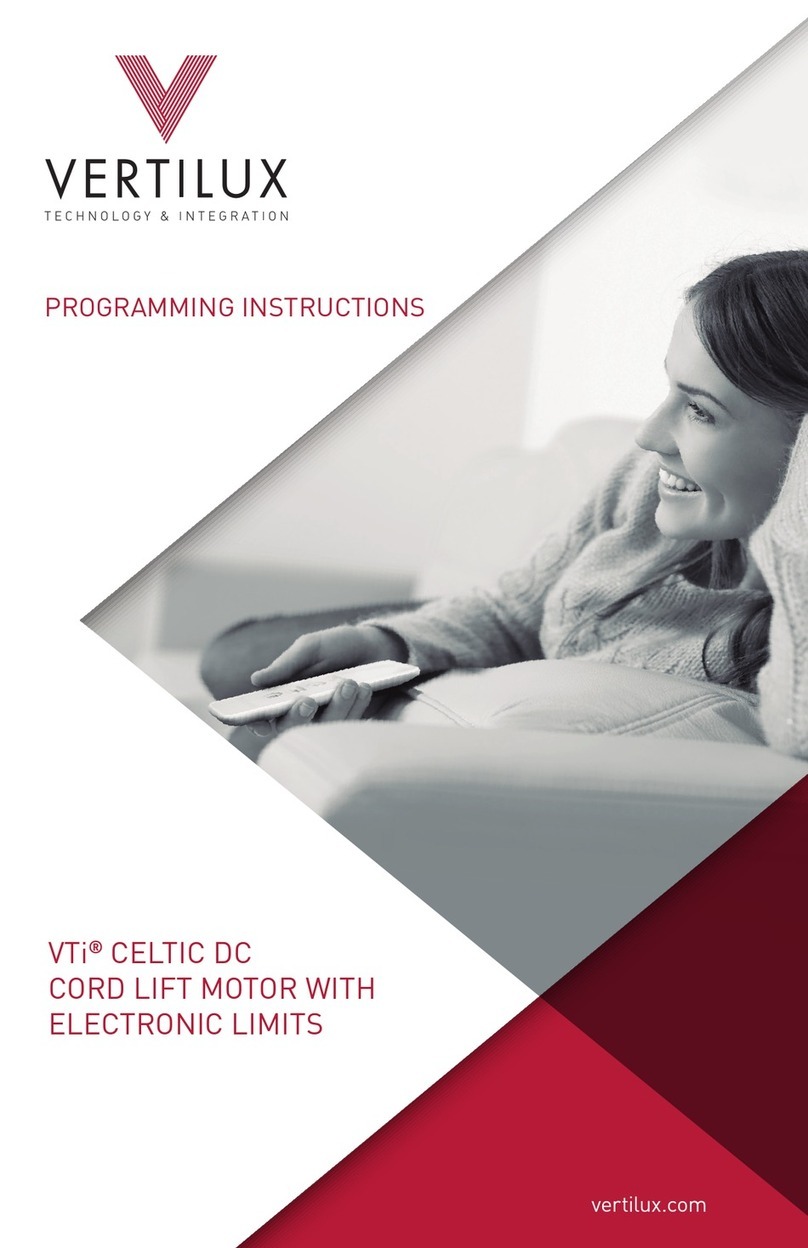Bticino HA4572 User manual

1 3
2 4
04/06-01 AP
COMANDO RADIO HA/HB4572 e H4572PI
PART. U0841A Istruzioni d’uso
Instructions for use
HA/HB4572
H4572PI
1
Questo dispositivo radio può essere utilizzato, insieme ad altri dispositivi radio Bticino, sia in un impianto tradizionale (per aggiungervi
funzionalità domotiche) sia in un sistema My Home Bticino per sfruttare i benefici della tecnologia radio in un sistema a bus misto
radio-filare.
Il comando radio, se è utilizzato in un impianto tradizionale, permette di pilotare direttamente attuatori radio. Se è invece utilizzato in
un sistema My Home, oltre a pilotare direttamente attuatori radio, può pilotare attuatori filari e richiamare scenari dell’impianto (tramite
l’interfaccia ricevente HC/HS4575 L/N/NT4575N).
Il comando radio è disponibile in due versioni: art. HA/HB4572 con telaio per montaggio superficiale, art. H4572PI con telaio per
montaggio ad incasso.
Le due versioni si differenziano unicamente per il telaio di supporto fornito a corredo e quindi per le modalità di installazione.
Sede
configuratori
Linguetta per
estrazione batteria
Indicatore luminoso,
LED
A
PL1
PL2
M
art. HA4572
per montaggio superficiale
art. H4572PI
per incasso
Queste versioni possono essere installate a parete mediante
nastro biadesivo (a corredo) o con normali tasselli ad espansione,
non necessitano quindi di scatola da incasso ed opere murarie.
Questa versione può essere installata ad incasso
utilizzando i tradizionali supporti Axolute.
Protezione
batteria
Alla prima messa in funzione del dispositivo è necessario rimuovere la linguetta di protezione della batteria
indicata in figura.
Tasto A Tasto B
Inserire la linguetta
nell’apposita sede
I
art. HB4572
per montaggio superficiale
Protezione
batteria
Protezione
batteria

Copritasti
Il comando radio deve essere completato dagli appositi copritasti: art. HC/HS4919.
Nel caso in cui il comando sia utilizzato in una modalità che prevede tasti a funzione singola, è necessario montare gli spessori forniti a
corredo dei copritasti, come mostrato in figura.
Sostituzione della batteria art. HA/HB4572
La sostituzione della batteria va effettuata come mostrato in figura, utilizzando l’apposita linguetta.
Spessore per utilizzo come
tasto a funzione singola
(per i dettagli vedere tabella
alla pagina seguente)
Inserire la linguetta con la freccia rivolta verso l’alto in modo che stia dalla parte del telaio di supporto.
3
1
4
2

Sostituzione della batteria art. H4572PI
Nella versione per incasso art. H4572PI, dopo che la batteria è stata inserita, inserire la linguetta nell’apposita sede come mostrato in
figura.
CONFIGURAZIONE per utilizzo in impianto tradizionale 2
È possibile scegliere, per i tasti del comando radio, una modalità di funzionamento tra quelle elencate nella tabella seguente.
A seconda del tipo di configuratore inserito nella sede M si ottiene una corrispondente modalità di funzionamento.
Le sedi dei configuratori A, PL1 e PL2 non sono utilizzate.
Gli ultimi 4 tipi di configurazione, a differenza dei primi 7, consentono di avere modalità di funzionamento miste: ossia il tasto A ed il
tasto B non hanno la stessa modalità di funzionamento.
Descrizione Configuratore in M Montaggio spessore
sui copritasti
Comando ON/OFF ciclico Nessun configuratore SI
Comando di ON ON SI
Comando di OFF OFF SI
Comando di ON premendo il tasto superiore, OFF premendo quello inferiore
O/I NO
Comando SU/GIÙ tapparelle fino a fine corsa ⇑⇓ NO
Comando SU/GIÙ tapparelle per il tempo di pressione del tasto ⇑⇓M NO
Modalità pulsante PUL SI
Modalità miste
TASTO A: Ciclico
TASTO B: Su/Giù 1COPRITASTO A: SI
COPRITASTO B: NO
TASTO A: Ciclico
TASTO B: Su/Giù Monostabile 2COPRITASTO A: SI
COPRITASTO B: NO
TASTO A: O/I
TASTO B: Su/Giù 3 NO
TASTO A: O/I
TASTO B: Su/Giù Monostabile 4 NO
A PL1 PL2 M
Configuratore
Nessuno, 1
÷9, GEN, AMB, GR, AUX
Nessuno, 1
÷9
Nessuno, 1
÷9
Vedi tabelle seguenti
CONFIGURAZIONE per utilizzo in sistema MY Home 3
Per utilizzare il dispositivo in un sistema My Home è necessario avere installato l’interfaccia radio ricevente art. HC/HS4575 o
L/N/NT4575N. Il comando radio deve essere configurato inserendo nelle sedi dei configuratori A, PL1, PL2 ed M gli opportuni
configuratori. Se PL2 non è configurato, il tasto B è disabilitato. Per conoscere le possibilità di configurazione fare riferimento alle tabelle
seguenti ed, eventualmente, alla guida My Home.
Nel caso in cui, alla pressione di un tasto, la configurazione presente sul dispositivo sia errata, non viene inviato alcun comando e
l’indicatore luminoso emette un rapido lampeggio.
2 3
5
6 7 8
4
1

Al configuratore inserito in posizione M corrispondono le seguenti funzioni:
Comando scenari
Numero scenario
sul modulo scenari
Configuratore
M = 5
Configuratore
M = 6
Configuratore
M = 7
Configuratore
M = 8
Scenario 1 Tasto 1
Scenario 2 Tasto 2
Scenario 3 Tasto 3
Scenario 4 Tasto 4
Scenario 5 Tasto 1
Scenario 6 Tasto 2
Scenario 7 Tasto 3
Scenario 8 Tasto 4
Scenario 9 Tasto 1
Scenario 10 Tasto 2
Scenario 11 Tasto 3
Scenario 12 Tasto 4
Scenario 13 Tasto 1
Scenario 14 Tasto 2
Scenario 15 Tasto 3
Scenario 16 Tasto 4
Descrizione Configuratore in M Montaggio spessore
sui copritasti
Comando ON/OFF ciclico
(regolazione intensità per pressione prolungata) Nessun configuratore SI
Comando di ON ON SI
Comando di OFF OFF SI
Comando di ON premendo il tasto superiore, OFF premendo quello inferiore
(regolazione intensità per pressione prolungata) O/I NO
Comando SU/GIÙ tapparelle fino a fine corsa ⇑⇓ NO
Comando SU/GIÙ tapparelle per il tempo di pressione del tasto ⇑⇓M NO
Modalità pulsante PUL SI
Modalità miste
TASTO A: Ciclico
TASTO B: Su/Giù 1COPRITASTO A: SI
COPRITASTO B: NO
TASTO A: Ciclico
TASTO B: Su/Giù Monostabile 2COPRITASTO A: SI
COPRITASTO B: NO
TASTO A: O/I
TASTO B: Su/Giù 3 NO
TASTO A: O/I
TASTO B: Su/Giù Monostabile 4 NO
Comando Scenari (1) 5÷8 NO
(1) Comando Scenari
Questa modalità trova impiego solo se nel sistema è presente il modulo scenari art.F420. Permette di richiamare (non programmare)
uno scenario già precedentemente memorizzato nel modulo scenari.
In questa modalità di funzionamento A PL1 rappresenta l’indirizzo del modulo scenari su cui andare ad agire. Il comando richiama uno
scenario tra 1 e 16 a seconda del configuratore inserito in M e del pulsante che viene premuto come indicato nella tabella seguente.
Alimentazione: Batteria 3V tipo CR2032
Temperatura di funzionamento: +5°C ÷ +35°C
Durata minima batteria: 2 anni
Frequenza radio: 868 Mhz
Portata: 100 metri in aria libera (pareti in metallo, cemento e placche metalliche riducono la portata)
Tipo di modulazione: FSK
DATI TECNICI
DICHIARAZIONE DI CONFORMITÀ
Gli articoli HC/HS4572 e H4572PI sono conformi ai requisiti essenziali della direttiva 1999/5/CE, in quanto rispettano le seguenti norme:
ETSI EN301 489-3 ETSI EN300 220-3
Anno di approvazione della marcatura CE secondo la direttiva indicata: 2005

RADIO CONTROL HA/HB4572 and H4572PI
4
This radio device can be used, together with other BTicino radio devices, in both a traditional system (to add house-automation
functions) and a BTicino My Home system to make full use of the benefits of radio technology in a mixed radio-wire bus system.
If the basic radio actuator is used in a traditional system it can control radio actuators directly. If instead it is used in a My Home system,
as well as directly controlling radio controls it can also control wire actuators and call system scenarios (by means of the transmitting
interface HC/HS4575N L/N/NT4575).
The radio control is available in two versions: item HA/HB4572 with frame for wall mounting and item H4572PI with frame for flush
mounting.
The only difference between the two versions is the supporting frame supplied with them and thus the mode of installation.
Configurator
socket
Tab to remove
battery
Luminous indicator,
LED
A
PL1
PL2
M
When the device is used for the first time the battery protection tab shown in the figure must be removed.
GB
A
PL1
PL2
M
item HA4572
for surface mounting
HB4572
for flush mounting
These versions can be installed on the wall using two-sided
adhesive tape (supplied), thus not requiring making holes in the
wall, or with normal rawlplugs.
This version can be flush mounted using
traditional Axolute supporting frames.
Battery
protection
Put the tab
in the socket
art. HB4572
for surface mounting
Battery
protection
Battery
protection
1 3
2 4
Key A Key B

Key covers
The radio control must be finished with the proper covers: item HC/HS4919.
If the control is used with single-function keys the spacers supplied with the key covers must be mounted, as shown in the figure.
Replacing battery item HA/HB4572
The battery is replaced as shown in the figure, using the tab.
Spacer for use as
single-function key
(see table on the next page
for details)
Insert the tab with the arrow facing upwards so that it protrudes from the supporting frame.
3
1
4
2

Replacing battery item H4572PI
In the flush-mounted version H4572PI, after the battery has been put in, insert the tab in the socket as shown in the figure.
CONFIGURATION for use in a traditional system 5
For the radio control keys a mode of operation can be chosen from those listed in the table below.
Depending on the type of configurator in socket M a corresponding mode of operation is obtained.
The sockets of configurators A, PL1 and PL2 are not used.
The last 4 types of configuration, unlike the first 7, allow mixed modes of operation: i.e. key A and key B do not have the same mode
of operation.
Description Configurator in M Spacer mounted
on the key covers
Cyclical ON/OFF command No configurator YES
ON command ON YES
OFF command OFF YES
ON command pressing the upper key, OFF pressing the lower key O/I NO
Rolling shutters UP/DOWN to limit switch command ⇑⇓ NO
Rolling shutters UP/DOWN for the time the key is pressed command ⇑⇓M NO
Pushbutton mode PUL YES
Mixed modes
KEY A: Cyclical
KEY B: Up/Down 1 KEY COVER A: YES
KEY COVER B: NO
KEY A: Cyclical
KEY B: Up/Down Monostable 2 KEY COVER A: YES
KEY COVER B: NO
KEY A: O/I
KEY B: Up/Down 3 NO
KEY A: O/I
KEY B: Up/Down Monostable 4 NO
A PL1 PL2 M
Configurator
None, 1
÷9, GEN, AMB, GR, AUX
None, 1
÷9
None, 1
÷9 See tables below
CONFIGURATION for use in a My Home system 6
To use the device in a My Home system receiving radio interface item HC/HS4575 or L/N/NT4575N must be installed. The radio
control must be configured putting the configurators into configurator sockets A, PL1, PL2 and M. If PL2 is not configured, key B is
disabled. To find out about the configuration possibilities refer to the following tables and to the My Home guide, if necessary.
If when a key is pressed the configuration on the device is wrong, no command is sent and the luminous indicator flashes quickly.
2 3
5
6 7 8
4
1

The following functions correspond to the configurator in position M:
Scenario command
Scenario number
scenario module
Configurator
M = 5
Configurator
M = 6
Configurator
M = 7
Configurator
M = 8
Scenario 1 Key 1
Scenario 2 Key 2
Scenario 3 Key 3
Scenario 4 Key 4
Scenario 5 Key 1
Scenario 6 Key 2
Scenario 7 Key 3
Scenario 8 Key 4
Scenario 9 Key 1
Scenario 10 Key 2
Scenario 11 Key 3
Scenario 12 Key 4
Scenario 13 Key 1
Scenario 14 Key 2
Scenario 15 Key 3
Scenario 16 Key 4
Description Configurator in M Spacer mounted
on the key covers
Cyclical ON/OFF command (adjusts intensity for long press) No configurator YES
ON command ON YES
OFF command OFF YES
ON command pressing the upper key, OFF pressing the lower key
(adjusts intensity for long press) O/I NO
Rolling shutters UP/DOWN to limit switch command ⇑⇓ NO
Rolling shutters UP/DOWN for the time the key is pressed command ⇑⇓M NO
Pushbutton mode PUL YES
Mixed modes
KEY A: Cyclical
KEY B: Up/Down 1 KEY COVER A: YES
KEY COVER B: NO
KEY A: Cyclical
KEY B: Up/Down Monostable 2 KEY COVER A: YES
KEY COVER B: NO
KEY A: O/I
KEY B: Up/Down 3 NO
KEY A: O/I
KEY B: Up/Down Monostable 4 NO
Scenario command (1) 5÷8 NO
(1)
Scenario command
This mode is only used if the system has scenario module item F420. It can call (not program) a scenario already saved in the
scenario module.
In this mode of operation A PL1 represents the address of the scenario module to be commanded. The command calls a scenario
between 1 and 16 depending on the configurator in M and on the pushbutton which is pressed as indicated in the table below.
Power supply: CR2032 3V battery
Operating temperature: +5°C ÷ +35°C
Minimum battery lifetime: 2 years
Radio frequency: 868 MHz
Range: 100m in free space (metal and cement walls or metal plates reduce the range)
Type of modulation: FSK
TECHNICAL DATA
DECLARATION OF CONFORMITY
Items HC/HS4572 and H4572PI conform to the essential requirements of directive 1999/5/CE, because they respect the following standards:
ETSI EN301 489-3 ETSI EN300 220-3
Year of approval of the CE marking according to the directive indicated: 2005
This manual suits for next models
2
Table of contents
Languages:
Other Bticino Home Automation manuals
